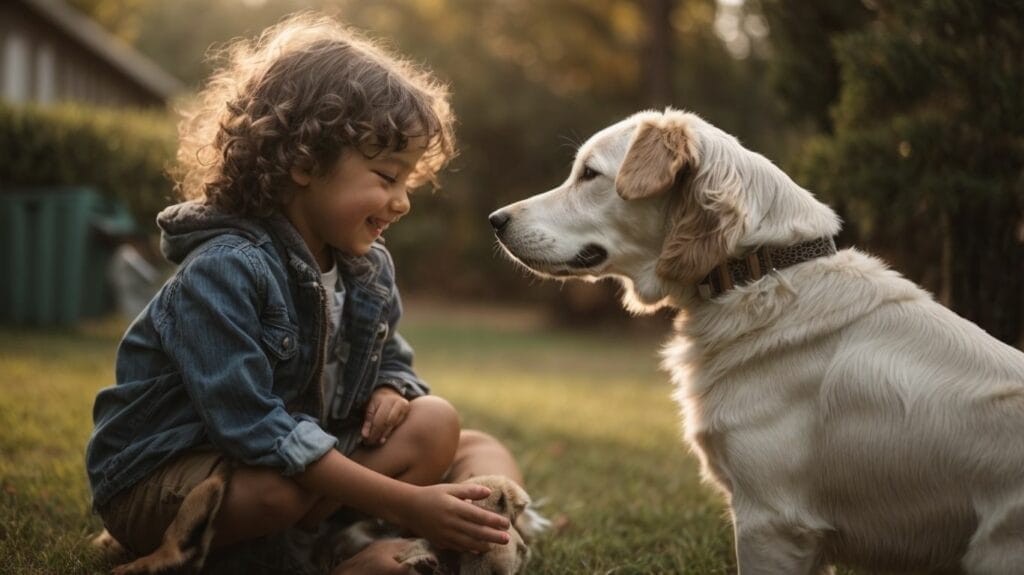Can I Pet That Dog?
Understanding Canine Behavior plays a crucial role in determining whether it is appropriate to approach and pet a dog. Dogs have their unique ways of communicating, and being aware of their behavioral cues can help us navigate interactions with them effectively.
Knowing how dogs communicate is essential to understanding their body language and vocalizations. Common behavioral cues to look for include tail wagging, ear position, body posture, facial expressions, and vocalizations. These cues can indicate a dog’s mood, whether they are comfortable or anxious, and if they are open to interaction.
The Importance of Asking Permission cannot be overstated when it comes to petting a dog. Respecting the dog’s space is essential, as some dogs may not be comfortable with strangers approaching them. It is crucial to understand that not all dogs enjoy being petted or feel comfortable around unfamiliar people.
Assessing the situation is an important step before approaching a dog. Is the dog friendly and approachable? Observing the dog’s behavior and body language can give insights into their disposition. It is essential to ascertain if the owner is comfortable with you petting their dog, as they know their dog’s behavior and preferences best.
Proper etiquette for petting a dog involves following a few guidelines. Approach slowly and calmly, allowing the dog to become familiar with your presence. Offering a closed fist for sniffing can help the dog get to know your scent. When petting, focus on approved areas like the chest or back, avoiding sensitive areas like the face and tail.
However, some dogs may not be petted due to fear or aggression issues. Recognizing signs of fear or aggression is crucial for personal safety. If a dog displays these signs, it is best to avoid attempting to pet them. Handling unfriendly dogs should be left to professionals or trained individuals who can safely manage the situation.
Ultimately, the key is to approach petting a dog with respect, empathy, and understanding. By being mindful of canine behavior, asking for permission, and following proper etiquette, we can ensure positive interactions between dogs and humans.
Key takeaways:
- Understanding canine behavior: Before petting a dog, it is important to understand how dogs communicate and recognize common behavioral cues.
- Importance of asking permission: Respecting a dog’s space and avoiding unexpected reactions can be achieved by asking the owner for permission before approaching or petting a dog.
- Proper etiquette for petting a dog: Approach slowly and calmly, offer a closed fist for sniffing, and gently pet in approved areas to ensure a positive interaction with the dog.
Understanding Canine Behavior

Photo Credits: Petnarnia.Com by Adam Davis
Understanding canine behavior is essential for both dog owners and individuals who frequently interact with dogs. By paying attention to their body language and behavior, we can gain a better comprehension of their needs, emotions, and preferences. Several critical factors to take into account encompass tail wagging, which can indicate happiness or anxiety; ear position, where up or back can convey different messages; and eye contact, whether averted or direct. Getting familiar with common behaviors such as barking, jumping, or growling can aid in avoiding misunderstandings. A real-life anecdote that exemplifies the significance of comprehending canine behavior is when a friend’s dog initially wagged its tail, only to exhibit signs of fear later. This experience taught us to be mindful of how dogs communicate.
How Do Dogs Communicate?
Dogs communicate through a combination of vocalizations, body language, and facial expressions. How Do Dogs Communicate? Barking, growling, and whining are common vocal cues that convey different emotions or intentions. Body language cues, such as tail wagging, ear position, and body posture, all provide insights into a dog’s mood and level of comfort. Facial expressions, including eye contact and lip licking, also play a role in communication. Understanding these cues is important in deciphering a dog’s feelings and intentions, helping to prevent misunderstandings and potential conflicts.
As a true history, it is believed that dogs have developed their communication skills through thousands of years of close interaction with humans. How Do Dogs Communicate? This mutual understanding has allowed dogs to become one of humanity’s most beloved companions. Dogs have learned to adapt their communication methods to effectively interact with humans, making them highly attuned to our emotions and intentions. Through careful observation and study, researchers and dog enthusiasts continue to uncover the intricacies of dog communication, enabling us to deepen our bond and connection with these amazing creatures.
Common Behavioral Cues to Look for
When interacting with dogs, it’s important to be able to recognize common behavioral cues to ensure a positive and safe experience:
- Body language: Pay attention to a dog’s body posture, such as a relaxed body, wagging tail, and ears in a neutral position, indicating friendliness.
- Facial expressions: Look for signs of attentiveness, relaxed eyes, and a relaxed mouth, which suggest the dog is comfortable.
- Tail wagging: A loose, wide wag usually indicates a happy and friendly dog, while a stiff, high wag can indicate aggression or discomfort.
- Vocalization: Listen for barks, growls, or whines, which can give insight into the dog’s emotional state.
- Paw lifting: A dog lifting a paw can indicate uncertainty or stress.
- Eye contact: Direct staring or avoiding eye contact can both be signs of aggression or fear.
- Overall demeanor: A dog displaying fear, anxiety, or aggression through pacing, panting, or freezing should be approached with caution.
By being aware of these common behavioral cues to look for, you can better understand a dog’s emotions and gauge whether it is comfortable or not.
The Importance of Asking Permission
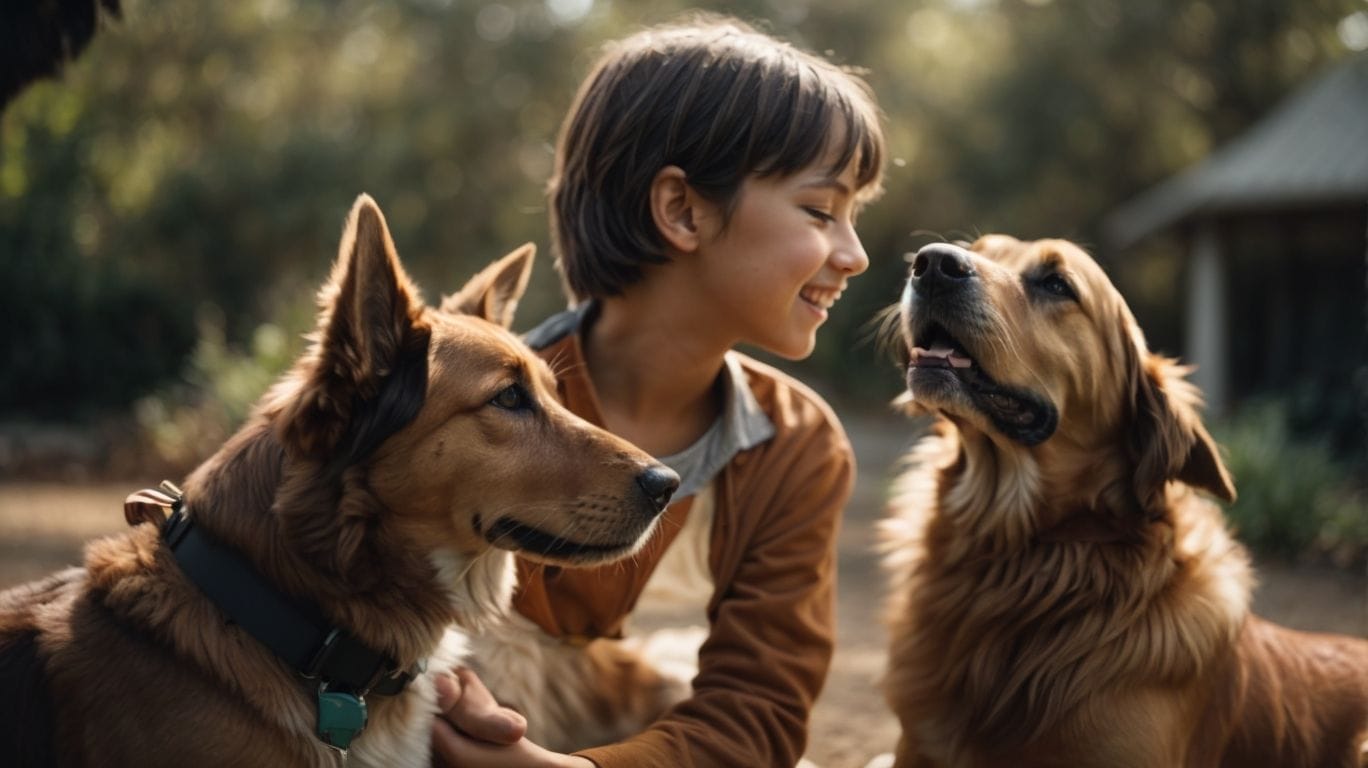
Photo Credits: Petnarnia.Com by Vincent Hill
Respecting personal boundaries and ensuring a positive interaction with our furry friends is crucial when it comes to approaching dogs. In this section, we’ll explore the importance of asking permission and how it plays a pivotal role in keeping both dogs and humans safe. We’ll discuss why respecting a dog’s space is essential and shed light on the significance of avoiding unexpected reactions. So grab a seat, and let’s dive into the world of canine etiquette!
Respecting the Dog’s Space
Respecting a dog’s space is crucial for ensuring their comfort and safety. Here are some guidelines to follow in order to respect the dog’s space properly:
- – Approach the dog slowly and calmly to avoid startling them.
- – Allow the dog to sniff your closed fist before attempting to pet them.
- – Pay attention to the dog’s body language and only pet them in areas where they are comfortable.
It is important to remember that not all dogs enjoy being petted, so it’s essential to be observant and respect their boundaries. If a dog displays signs of fear or aggression, it is best to refrain from petting them completely and give them the space they require.
Avoiding Unexpected Reactions
Avoiding Unexpected Reactions
Unexpected reactions from dogs can be avoided by understanding their body language and respecting their boundaries. Here are some ways to avoid unexpected reactions when interacting with a dog:
- Approach slowly and calmly to avoid startling the dog.
- Offer a closed fist for the dog to sniff, allowing them to become familiar with your scent.
- Avoid making sudden movements or loud noises that might frighten the dog.
- Refrain from reaching over the dog’s head or invading their personal space without permission.
- Pay attention to signs of fear or aggression, such as growling, showing teeth, or stiff body posture.
- If a dog shows signs of being unfriendly, it is best to respect their boundaries and avoid petting them.
By being observant and understanding a dog’s cues, you can minimize the risk of unexpected reactions and ensure a positive interaction with dogs.
Assessing the Situation
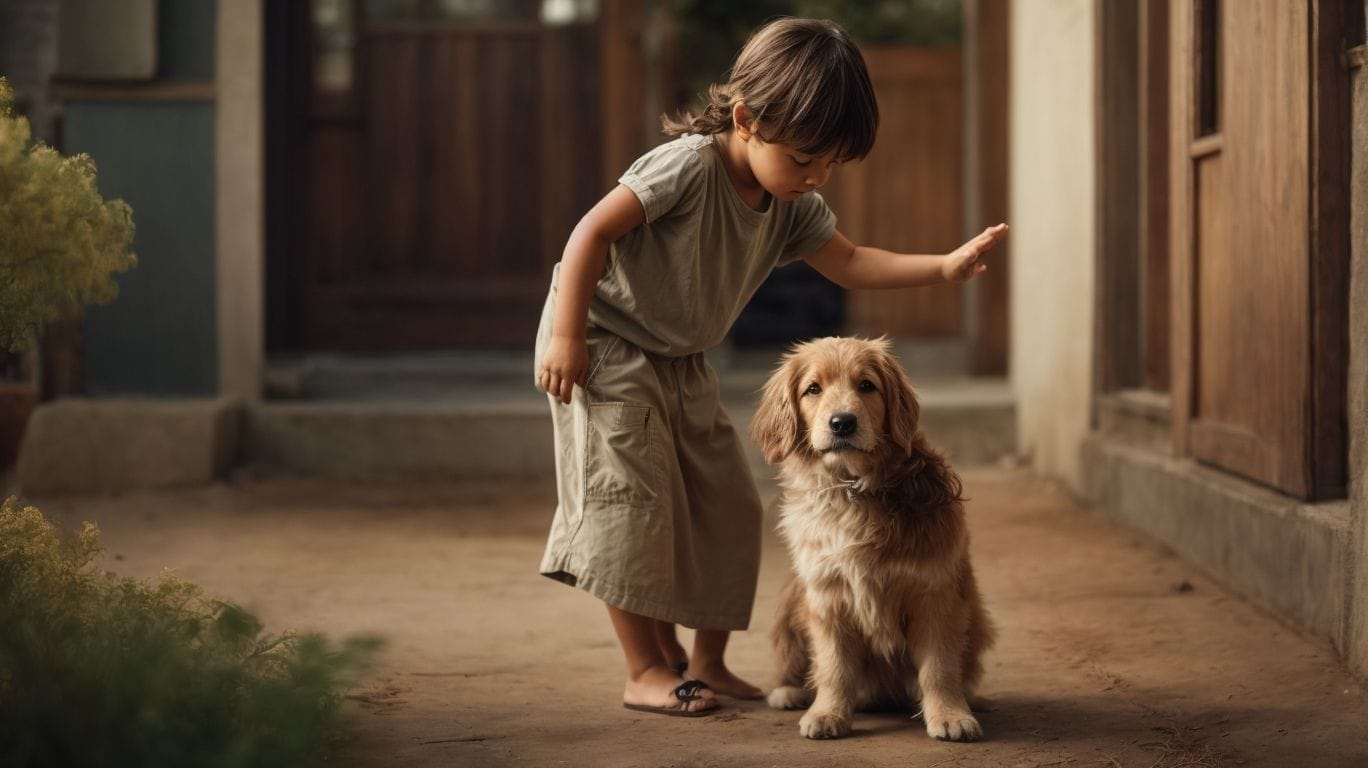
Photo Credits: Petnarnia.Com by Charles Hill
Assessing the situation is crucial when determining whether or not to approach and interact with a dog. It is important to carefully evaluate the dog’s body language, behavior, and any signs of distress or aggression. One should observe for indications such as a relaxed body, a wagging tail, and a friendly approach. It is advisable to avoid dogs that appear anxious, growling, or backing away. Additionally, considering environmental factors, including the dog’s familiarity with the individual, the presence of the owner, and any potential triggers, is essential. By conducting this meticulous assessment, one can ensure a positive interaction and minimize the chances of any mishaps.
Is the Dog Friendly and Approachable?
Determining if a dog is friendly and approachable is crucial before attempting to pet it. Is the dog friendly and approachable? Here are some factors to consider:
- Body Language: Observe the dog’s body language and look for signs of comfort and relaxation, such as a loose body, wagging tail, and open mouth.
- Eye Contact: Friendly dogs will maintain soft eye contact and may even approach you with a relaxed gaze.
- Approach: A dog that is friendly and approachable will often show interest in interacting with you by making gentle approaches or inviting gestures like wagging its tail or play bows.
- Owner’s Consent: Always ask the owner if it’s safe to approach and pet their dog, as they know the dog’s temperament best.
Is the dog friendly and approachable? It’s crucial to respect the dog’s boundaries and ensure a positive interaction for both you and the dog.
Is the Owner Comfortable with You Petting the Dog?
To ensure a positive interaction with a dog, it is essential to consider the owner’s comfort level with you petting their dog. Here are some key points to keep in mind:
- Observe body language: Assess the owner’s body language and verbal cues to determine if they seem open to you approaching their dog.
- Ask for permission: Always ask the owner if it is okay to pet their dog, even if the dog appears friendly.
- Respect their decision: If the owner declines your request to pet their dog, respect their decision and do not push the issue.
- Be mindful of boundaries: If the owner allows you to pet their dog, be cautious of their guidelines and restrictions, such as certain areas the dog prefers not to be touched.
Remember, respecting the owner’s comfort level contributes to a positive and safe interaction with their dog.
Proper Etiquette for Petting a Dog
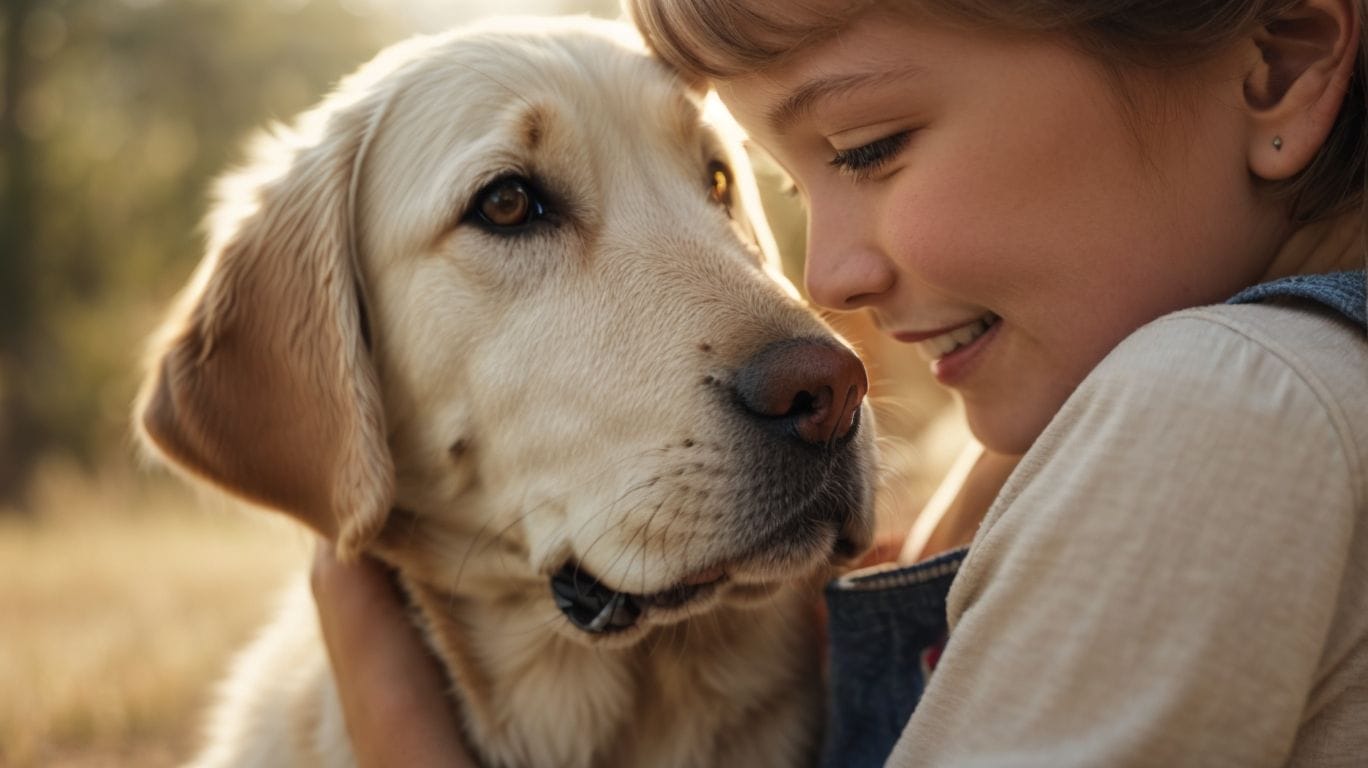
Photo Credits: Petnarnia.Com by Mark Adams
Proper etiquette for petting a dog involves mastering the art of approach, interaction, and respect. In this section, we’ll uncover the secrets to successfully petting our furry friends. From approaching calmly and slowly to offering a closed fist for a friendly sniff, we’ll explore the do’s and don’ts of engaging with dogs. Get ready to discover the essential guidelines to follow when gently petting in approved areas, ensuring a positive and enjoyable interaction with our canine companions.
Approaching Slowly and Calmly
- When approaching a dog, it is vital to approach slowly and calmly to ensure a positive interaction.
- Remember to approach the dog from the side instead of head-on.
- Make sure to keep your body language relaxed and refrain from making sudden movements.
- Use a soft and soothing tone while speaking to convey a sense of calmness.
- Avoid making direct eye contact with the dog, as it may be perceived as a threat.
- Offer the back of your hand for the dog to sniff, allowing them to become familiar with your scent.
- If the dog appears comfortable, gently pet them on their chest or under their chin.
Pro-tip: Always bear in mind that approaching a dog slowly and calmly is crucial. Giving them the necessary space and time to adjust to your presence will help build trust and establish a positive connection.
Offering a Closed Fist for Sniffing
When approaching a dog, it’s crucial to incorporate the practice of offering a closed fist for sniffing. This simple gesture enables the dog to gather essential information about you by utilizing their highly developed sense of smell. By presenting a closed fist instead of an open hand, you are taking measures to safeguard your fingers in case the dog feels anxious or uncertain. Furthermore, it grants the dog the opportunity to approach and investigate their rhythm, fostering a more comfortable and harmonious interaction. It is important to bear in mind that not all dogs may be receptive to being petted, so initiating contact with a closed fist is a considerate approach that avoids encroaching on their personal space.
Allow me to share a true story with you: On one occasion, I encountered a timid rescue dog during a visit to the park. Instead of extending my hand to pet her, I decided to adhere to the practice of offering a closed fist for sniffing. With caution, she gradually approached, took a sniff, and delightfully wagged her tail. This heartwarming experience served as a poignant reminder of the immense value of offering a closed fist for sniffing as a means to establish trust and create a positive interaction with a dog.
Gently Petting in Approved Areas
When petting a dog, it’s important to be gentle and respectful, focusing on approved areas for petting. Gently pet the dog in areas like the back or sides, avoiding sensitive areas like the face or tail. Here are some guidelines to follow:
- Start by approaching the dog slowly and calmly.
- Offer a closed fist for the dog to sniff and initiate contact.
- She gently petted the dog in approved areas like the back or sides, avoiding sensitive areas like the face or tail.
- Observe the dog’s body language for signs of discomfort or tension.
- If the dog shows any signs of fear or aggression, refrain from petting and give them space.
Remember, every dog is different, so always ask the owner for permission and respect the dog’s boundaries.
Dealing with Dogs that Cannot be Petted
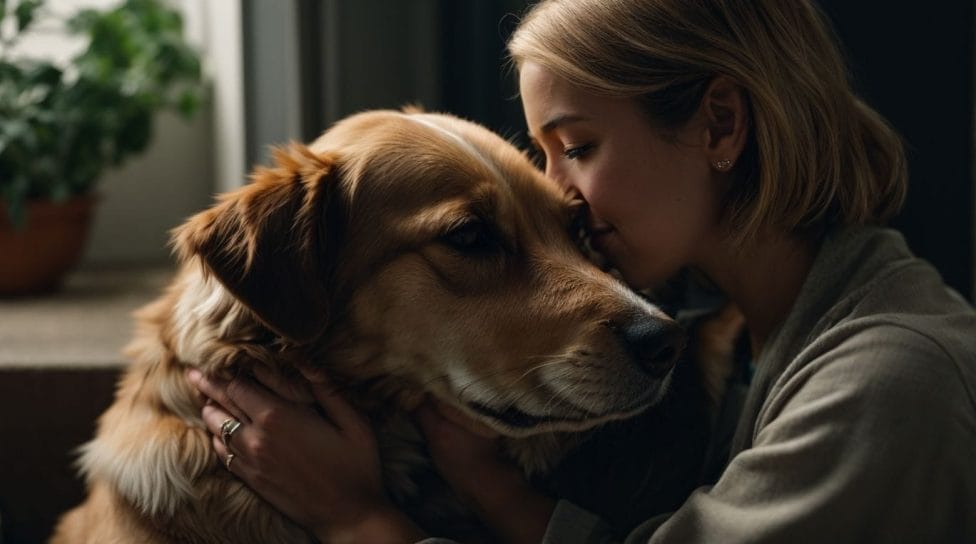
Photo Credits: Petnarnia.Com by Dylan Martin
Dealing with dogs that cannot be petted requires a keen eye to recognize signs of fear or aggression while handling them with care. Whether it’s a tense body language or a low growl, understanding these signals is crucial to ensure safety. In this section, we’ll explore tips and techniques for handling unfriendly dogs, helping you navigate encounters with confidence and caution. So, let’s dive in and learn how to approach these situations with the right knowledge and precautions.
Recognizing Signs of Fear or Aggression
Recognizing signs of fear or aggression in dogs is essential for preventing potential incidents and ensuring your safety. It is crucial to understand the indications of fear or aggression, which include growling, baring teeth, raised fur, tense body posture, and backing away. In addition, a fearful or aggressive dog might exhibit signs of avoidance, such as turning away or hiding. Respecting the dog’s boundaries and refraining from approaching or petting a dog displaying these signs is of utmost importance. By comprehending and identifying these behavioral cues, you can act responsibly and prevent any unfortunate situations. It is a fact that dogs communicate through a combination of body language, vocalizations, and facial expressions.
Tips for Handling Unfriendly Dogs
Tips for Handling Unfriendly Dogs
Handling unfriendly dogs requires caution and following specific steps to ensure safety for both you and the dog. Here are some tips for handling unfriendly dogs:
- Stay calm and avoid sudden movements or loud noises.
- Do not make direct eye contact with the dog.
- Speak in a soft, calm voice to reassure the dog.
- Keep a safe distance from the dog and give it space.
- Do not attempt to touch or pet the dog without permission from the owner or a professional.
- If the dog shows signs of aggression, back away slowly without turning your back on the dog.
- Notify the owner or authorities if you encounter a consistently unfriendly dog in your neighborhood.
Some Facts About “Can I Pet That Dog?”:
- ✅ “Can I Pet That Dog?” is a popular phrase used to ask permission to pet a dog.
- ✅ Many children and adults enjoy interacting with dogs and asking if they can pet them.
- ✅ Dogs can provide therapeutic benefits, such as reducing stress and increasing happiness.
- ✅ It is important to always ask for permission before petting a dog, as some dogs may not be comfortable with strangers.
- ✅ Interacting with dogs respectfully can help create positive experiences and strengthen the bond between humans and dogs.
